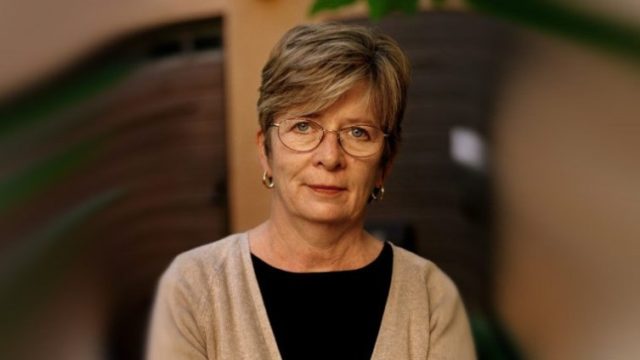Barbara Ehrenreich Biography
On the 26th of August, 1941, in Butte, Montana, Barbara Ehrenreich was welcomed into the world by her parents; Isabelle Oxley and Ben Howes Alexander, as Barbara Alexander. While it is not clear what her mother did for a living, her father was said to be a copper miner who later rose to become a senior executive at the Gillette Corporation. She has two siblings; a brother named Ben Alexander Jr., and a sister named Diane Alexander. Details about where Ehrenreich received her early education is not available. However, she is known to have later attended Reed College in Portland, Oregon where she studied Chemistry. She notably wrote her senior thesis on “Electrochemical Oscillations of the Silicon Anode” before graduating in 1963. A few years later, in 1968, she bagged a Ph.D. in Cellular Immunology from Rockefeller University. Following the completion of her doctorate, Barbara Ehrenreich chose to not pursue a career in science. She instead found work as an analyst with the Bureau of the Budget in New York City. She later moved on to join the Health Policy Advisory Center before later becoming an assistant professor at the State University of New York at Old Westbury. All through the 70s, Ehrenreich was known for her advocacy and activism on issues relating to women’s health. She spoke frequently at conferences on the matter and also began teaching and writing about feminism in general. Her knowledge on the subject matter helped her secure a visiting professor position at the University of Missouri and Sangamon State University in the late ’70s and early ’80s. Other academic positions she held at the time include adjunct associate professor at New York University, a lecturer at the University of California, Santa Barbara, and teaching fellow at the graduate school of journalism at the University of California, Berkeley. While maintaining her very busy schedule of lecturing in institutions across the country, Barbara Ehrenreich also worked as a freelance writer. She gained a reputation for her non-fiction reportage, book reviews and social commentary that appeared in publications like The New York Times Book Review, The Washington Post, The Atlantic Monthly, the Los Angeles Times Book Review supplement, Mother Jones, and Vogue. Other publications that carried her feature articles, essays, and op-eds include Harper’s Magazine, Time, In These Times, The Progressive, and The Wall Street Journal.
Barbara Ehrenreich Books
Since the inception of her career, Barbara Ehrenreich has authored several books which include fiction, nonfiction, and essays, among other things. Some of her most notable works includeThe Uptake, Storage, and Intracellular Hydrolysis of Carbohydrates by Macrophages (with Zanvil A. Cohn) (1969), Complaints and Disorders: The Sexual Politics of Sickness (with Deirdre English) (1973), and For Her Own Good: Two Centuries of the Experts’ Advice to Women (with Deirdre English) (1978). Others are Women in the Global Factory (1983), Fear of Falling: The Inner Life of the Middle Class (1989), Nickel and Dimed: On (Not) Getting By In America (2001), and Dancing in the Streets: A History of Collective Joy (2007). More recently, Barbara published Living with a Wild God: A Nonbeliever’s Search for the Truth about Everything (2014), and Natural Causes: An Epidemic of Wellness, the Certainty of Dying, and Killing Ourselves to Live Longer (2018).
Facts About The Author
Relationship History
Barbara Ehrenreich has been married and divorced twice. Her first marriage was to author and clinical psychologist John Ehrenreich in 1966. The two are said to have met during an anti-war activism campaign in New York City. Four years after exchanging vows, the couple welcomed their first child together, a daughter named Rosa Brooks in 1970. As the story goes, Ehrenreich was said to have become concerned with feminism and women’s health issues following the horrific birthing experience where she was induced into labor because the doctor wanted to leave the clinic. In 1972, they welcomed another child, a son they named Ben. In 1977, Barbara and John got a divorce. She remained single for six years before walking down the aisle again, this time with union organizer Gary Stevenson in 1983. Her second marriage did not produce any children and it lasted for ten years, as they called it quits in 1993. Read Also: 9 Must-Read Roger Angell Books, Essays & Literary Works
Awards and Recognition
Barbara Ehrenreich’s first notable award came in 1980 when she and her colleagues at Mother Jones magazine received the National Magazine Award for excellence in reporting. She won the award again in 2002 for her article “Welcome to Cancerland,” which she penned following her diagnosis with breast cancer. In 1998, she was named “Humanist of the Year” by the American Humanist Association and her Harper’s article “Nickle and Dimed” in 2000 earned her the Sidney Hillman Award for journalism. Other awards which she has received include a Ford Foundation award, a Guggenheim Fellowship, a Lannan Literary Award, and the prestigious Erasmus Prize by King Willem-Alexander of the Netherlands.
Career Achievements
Barbara Ehrenreich has founded and served as a board member or advisor to a number of organizations that advocate women’s health and social justice. They include the U.S. National Women’s Health Network, the National Organization for the Reform of Marijuana Laws, the National Abortion Rights Action League, the Center for Popular Economics, and the Campaign for America’s Future.



